Introduction
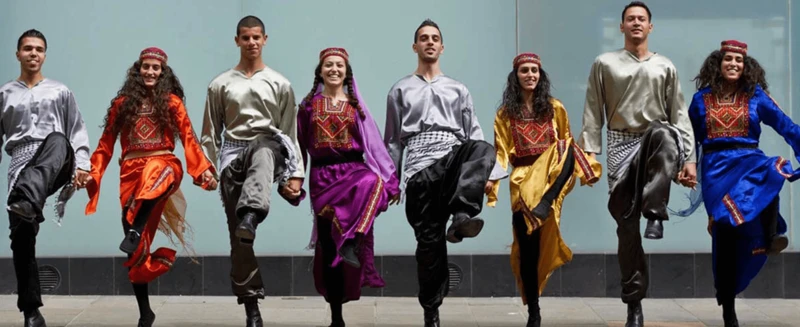
The vibrant and intricate movements of Middle Eastern dance have captured the hearts and imaginations of people around the world. From the exuberant celebrations of religious festivals to the joyous occasions of weddings, these dances play an important role in the cultural fabric of the Middle East. This ancient tradition has a rich history intertwined with the region’s religions, politics, and social norms. In this article, we will explore the significance of these dances, the different types of Middle Eastern dance, their costumes and props, music and instruments, and their role in preserving culture. As the popularity of Middle Eastern dance continues to grow worldwide, it is important to examine its roots and appreciate the beauty and complexities of this art form.
History of Middle Eastern Dance
One of the most enduring and beloved art forms in Middle Eastern culture is dance. The history of Middle Eastern dance spans back centuries and is an important part of the region’s cultural identity. Strong elements of sensuality, spirituality, and storytelling can be seen in dance forms that have been passed down from generation to generation. Middle Eastern dance is a fusion of different styles and cultural influences that have been shaped by the region’s climate, migration patterns, and religious practices.
Origins and Evolution
The origins of Middle Eastern dance are difficult to trace due to the lack of written records. However, it is believed that some of the earliest forms of dance in the region were connected to ancient religious rituals. Over time, dance styles evolved and incorporated elements from various cultures, including those of ancient Greece, Persia, and India. As the Islamic Empire grew in the seventh century, dance began to be more regulated and censored in some areas due to religious beliefs.
Regional Variations
As Middle Eastern dance continued to evolve, it began to take on regional variations. Different countries and cultural groups developed unique styles that are still celebrated today. For example, Egyptian belly dancing is known for its fluid, snake-like movements that emphasize the hips and torso. Turkish belly dancing, on the other hand, features more energetic movements such as spinning and weaving.
Famous Dancers
Over the centuries, many famous Middle Eastern dancers have emerged to showcase the beauty and power of the art form. One of the most well-known is Samia Gamal, an Egyptian dancer who helped popularize belly dancing in the 1940s and 1950s. Other famous dancers include Morocco, who is credited with popularizing North African dance in the West, and Raqia Hassan, an Egyptian dancer who has trained some of today’s most famous belly dancers.
Current State of Middle Eastern Dance
Today, Middle Eastern dance is still an important part of cultural celebrations and events throughout the Middle East and beyond. It has also gained popularity in the West due to its sensuality and mesmerizing movements. However, it has also faced controversy due to cultural misunderstandings and stereotypes. Despite this, Middle Eastern dance continues to be a celebrated art form that connects generations and brings joy to those who participate in it.
For more information on the history and evolution of Middle Eastern dance, please visit our page on the origins and evolution of Middle Eastern Dance Forms.
Cultural Significance

The Middle Eastern culture is known to be rich and diverse. The customs and traditions of the Middle East reflect the region’s historical and cultural background. One of the significant cultural aspects of this area is Middle Eastern dance. The art of Middle Eastern dance plays a vital role in many celebrations and festivals, bringing together people of all ages and backgrounds. Its cultural significance is deeply rooted in the history and traditions of the Middle East. From religious celebrations to weddings and other festivities, Middle Eastern dance has a fascinating influence on the cultural practices of the region. In this section, we will explore the importance of this dance form in Middle Eastern culture and its impact on various celebrations and festivals.
Religious Celebrations
Middle Eastern dance plays an essential role in religious celebrations throughout the Middle East. One example of this is the Zār ritual, which is a healing ceremony commonly practiced in Egypt and Sudan. This ceremony involves dancing to the beat of traditional drums and the use of specific movements that are believed to drive away evil spirits that cause illness or bad luck. Strong women who are believed to possess supernatural powers lead the ceremony, using their dance to invoke spirits and heal individuals who are possessed by them.
Another example of Middle Eastern dance used in religious celebrations is the Sufi whirling dance. This dance is performed by members of the Sufi order during religious gatherings called Dhikr. The dance represents a physical expression of the spiritual journey towards finding truth and love. The whirling movement is believed to bring the performer closer to God, and it is often accompanied by chanting.
Dabke is another traditional Middle Eastern dance that is performed during religious celebrations, especially weddings. This line dance is widely spread across the Levant region, and it symbolizes unity and solidarity. It is always performed in a large group, and the dancers hold hands forming a long chain. The music is usually played with traditional instruments such as the darbuka or the mizmar, which give the dance a unique rhythm.
The role of Middle Eastern dance in religious celebrations is significant in preserving and passing on cultural traditions from generation to generation. These dances represent a physical expression of spirituality and evoke feelings of unity and connection within the community. The use of traditional instruments and costumes also adds to the authenticity of the dance, making it an integral part of the cultural heritage of the Middle East.
Interesting fact: In some religious practices, it is believed that men can also perform belly dance. While this may be surprising to some who associate belly dance with female dancers, in some Middle Eastern cultures, male belly dancers are a common sight during religious celebrations.
Wedding Ceremonies
Wedding ceremonies hold a special place in Middle Eastern culture, and Middle Eastern dance plays a crucial role in these celebrations. In many Middle Eastern countries, the wedding ceremony is a multiple-day event, and dancing is an integral part of the festivities. During these celebrations, the bride and groom typically have their own separate dance performances. However, it is not uncommon for guests to also join in the dance. The traditional Middle Eastern dance style of belly dance is the most commonly performed dance at weddings. The bride, bridesmaids, and all of the female guests often wear beautiful, colorful costumes that consist of a long and flowy dress with intricate beading, embroidery, and jewelry.
In addition to belly dance, there are several other Middle Eastern dances that are often performed at weddings. For example, the Khaleeji dance is popular in the Gulf countries and involves dance movements with the use of a headscarf. The Dabke is another popular style of dance that is performed in the Levantine region. Dabke is a line dance that involves foot stomping and energetic movements, and it is commonly performed at weddings and other joyous occasions.
While female dancers are the most commonly associated with Middle Eastern dance, men also get involved in the celebrations. In some parts of the Middle East, it is traditional for men to perform a sword dance or the Ardah as part of the wedding celebrations. The Ardah is a group dance that consists of drumming, poetry recitation, and swordplay. The dance is usually performed by a group of men, all dressed in traditional attire.
Middle Eastern dance is an essential part of wedding ceremonies, as it signifies the union of two people and their families. These traditional dances not only add to the joyous occasion but also hold cultural and historical significance. They serve as a way of honoring the traditions of the families and communities involved in the celebration. Additionally, Middle Eastern dance is a way of connecting communities and bringing everyone together to celebrate the happy occasion.
Other Festivals
In addition to religious and wedding celebrations, Middle Eastern dance plays a significant role in many other festivals throughout the region. These festivals often showcase a variety of dance styles and performances, highlighting the rich cultural traditions of the Middle East.
1. Harvest Festivals: Celebrated in many Middle Eastern countries, harvest festivals feature dance performances that depict the joy and abundance of the harvest season. One such festival is the Egyptian Sham El-Nessim, which dates back to ancient times and includes dance performances as well as picnics and outdoor activities.
2. New Year’s Festivals: The Persian New Year, also known as Nowruz, is celebrated in Iran and many other Middle Eastern countries. The festival includes dance performances such as the Raghs-e Chobi, a traditional dance that features intricate footwork and hand movements.
3. Music Festivals: Music festivals in the Middle East often feature dance performances as well. The annual Cairo International Festival for Contemporary and Experimental Theatre, for example, showcases performances by some of the most famous Middle Eastern dancers and choreographers.
4. Cultural Celebrations: Festivals and celebrations that highlight the culture and heritage of a particular region often include dance performances. One such festival is the Jordan Festival, which features performances of traditional Middle Eastern dances as well as modern interpretations.
5. International Festivals: Middle Eastern dance is also showcased at international festivals around the world. The Ahlan Wa Sahlan Festival in Egypt, for example, attracts dancers and enthusiasts from around the globe.
It is clear that Middle Eastern dance is a vital component of many celebrations and festivals throughout the region. These festivals provide an opportunity for dancers and audiences alike to experience the beauty and diversity of this rich cultural tradition.
Types of Middle Eastern Dance
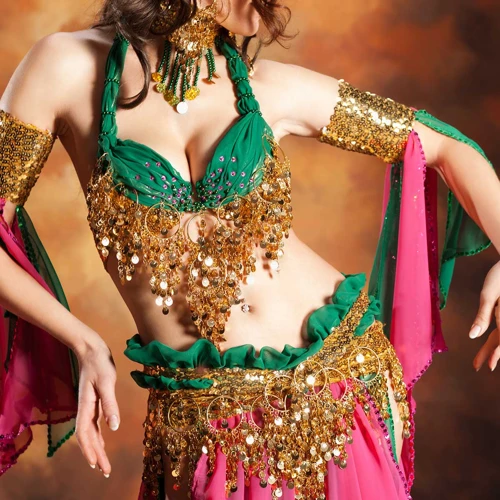
As the Middle Eastern region comprises of different countries and cultural backgrounds, it has a rich and varied heritage of dance forms. There are several types of Middle Eastern dance, each carrying its unique style and significance. From the popular and sensuous belly dance to the folklore-inspired and tribal fusion styles, Middle Eastern dance has something for everyone. In this section, we will delve deeper into the various types of Middle Eastern dance and their distinguishing features. You can also learn about famous Middle Eastern dancers or traditional instruments used in Middle Eastern dance or get insights into regional dance styles or costumes used in the performances.
Belly Dancing
One of the most well-known and popular forms of Middle Eastern dance is belly dancing. Originating from the Middle East and North Africa, this style of dance has been performed for centuries and has gained popularity around the world.
Belly dancing is characterized by fluid movements of the hips, abdomen, and arms, with an emphasis on isolating individual body parts. It is often performed by women, but there are also male belly dancers who perform a similar style of dance with their own unique choreography and clothing.
There are different regional styles of belly dancing, each with their own unique flavor and movements. Some of the most famous styles include Egyptian, Turkish, and Lebanese belly dance. Each style has its own set of movements and steps, and dancers often incorporate their own personal style into their performances.
Belly dancing costumes are often ornate and heavily embellished, with flowing skirts and cropped tops that show off the dancer’s midriff. Some dancers also wear accessories such as belts, scarves, or jewelry to accentuate their movements. Costuming is an important aspect of the dance and can vary depending on the region and style of belly dance being performed. More information about costuming can be found on our article about costuming in Middle Eastern dance.
Many people associate belly dancing with sensuality and eroticism, but this is a common misconception. In fact, belly dancing has a rich cultural significance and can be performed at celebrations such as weddings or religious festivals. More information about the cultural significance of belly dancing can be found in our article about male belly dancing.
Despite its popularity around the world, there is still some controversy surrounding belly dancing. Some argue that it perpetuates negative stereotypes of Middle Eastern women as exotic and sexualized, while others argue that it is a celebration of feminine strength and beauty. More information about common misconceptions can be found in our article about misconceptions in Middle Eastern dance.
Belly dancing is a beautiful and expressive form of dance that continues to grow in popularity both in the Middle East and around the world. Some of the most famous Middle Eastern dancers include Tahia Carioca and Samia Gamal. More information about these dancers and others can be found in our article about famous Middle Eastern dancers.
Middle Eastern Folkloric Dance
Middle Eastern Folkloric Dance, also known as traditional or ethnic dance, refers to the various styles of dance that originated from different regions of the Middle East. These dances have been passed down through generations and still play an important role in cultural celebrations and festivals. Some of the most popular Middle Eastern folkloric dances include:
- Dabke: This line dance originated in Lebanon, Syria, Jordan, and Palestine and is usually performed at weddings, harvest festivals, and other cultural events. Dancers form a line by holding hands and move in a step and stomp pattern.
- Saidi: This dance is native to Upper Egypt and is characterized by the use of a cane or stick. It is usually performed by men at weddings and other festive occasions.
- Zaffa: This is a wedding procession that involves traditional music, singing, and dance. It usually starts with the arrival of the groom and his family and leads to the entrance of the bride.
- Khaleegy: This dance originates from the Gulf states and is mainly performed by women. The dance includes swaying movements and the use of a scarf or veil.
Middle Eastern folkloric dances are often accompanied by traditional music played by live bands or recorded tracks. The costumes for these dances are typically colorful and reflect the region’s cultural heritage. Women often wear long dresses with flowing skirts, while men wear long shirts and trousers.
These dances play an important role in preserving cultural heritage and passing it down to younger generations. While there may be regional variations in the dance styles, the basic movements and steps have remained consistent over time.
Learning Middle Eastern folkloric dance can also provide an opportunity for individuals to connect with their cultural roots and gain a deeper understanding of the Middle Eastern culture. With the rise in popularity of Middle Eastern dance forms, there are now many workshops and classes available to learn these traditional dances.
If you want to learn more about Middle Eastern music, you can check out our previous article on traditional Middle Eastern instruments, or if you want to learn about different regional styles of Middle Eastern dance, check out our article on characteristics of regional styles of Middle Eastern dance.
Tribal Fusion
Tribal Fusion is a relatively new style of Middle Eastern dance that emerged in the United States in the 1990s. It is a fusion of traditional Middle Eastern dance, flamenco, hip hop, and other dance forms. Tribal Fusion is characterized by a strong emphasis on isolations, fluid movements, and intricate, choreographed patterns.
Unlike other forms of Middle Eastern dance, Tribal Fusion does not have strict rules or traditional movements. Instead, it encourages creativity and experimentation. Dancers often wear costumes that incorporate traditional Middle Eastern textiles and jewelry, as well as elements of modern, urban fashion.
| Features | Description |
|---|---|
| Costumes | Tribal Fusion costumes often include elements of traditional Middle Eastern dress, such as coins, scarves, and harem pants, as well as modern and urban fashion styles. |
| Movements | Isolations, fluid movements, and intricate, choreographed patterns are common in Tribal Fusion dance. Dancers may also incorporate elements of other dance forms, such as flamenco and hip hop. |
| Music | Tribal Fusion dancers often perform to a wide range of music styles, including traditional Middle Eastern music, electronic, and hip hop. The music is typically characterized by a strong beat and a driving rhythm. |
| Props | Tribal Fusion dancers may use a variety of props in their performances, including veils, swords, and fans. |
Tribal Fusion has become popular around the world, with dance communities in many countries. While some critics argue that it is not true Middle Eastern dance, many dancers and enthusiasts appreciate Tribal Fusion as a creative and innovative expression of Middle Eastern dance’s evolution.
Costumes and Props
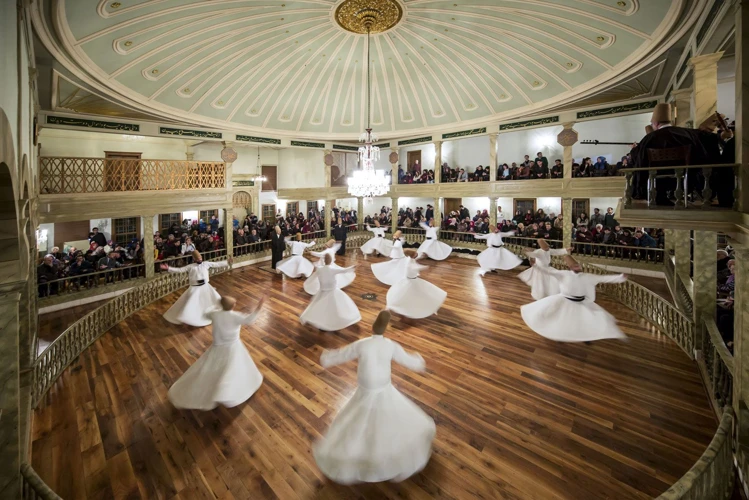
When it comes to Middle Eastern dance, costumes and props are just as important as the movements themselves. The intricate and dazzling costumes worn by Middle Eastern dancers are a reflection of the rich and diverse cultural traditions of the region.
Costumes: The costumes worn by Middle Eastern dancers are often made with a variety of materials such as silk, chiffon, and velvet, and are highly embellished with beads, sequins, and other decorative elements. These costumes are designed to highlight the dancer’s movements and create a dynamic visual display. The colors of the costumes are also highly symbolic, with red representing love, white representing purity, and black representing power.
Props: In addition to costumes, props are often used in Middle Eastern dance to enhance the story being told. One of the most iconic props is the veil, which is used in a variety of ways to create a sense of mystery and allure. Swords, tambourines, and finger cymbals are also commonly used as props in Middle Eastern dance.
Meaning: Each costume and prop has its own unique meaning and significance. For example, the sword is often used to represent the power and strength of the dancer, while finger cymbals symbolize the rhythm and beat of the music.
Functionality: Additionally, the costumes and props used in Middle Eastern dance are designed to be functional as well as beautiful. The flowy skirts and veils allow for fluid movements, while the finger cymbals provide a percussion element to the music.
Costumes and props play an integral role in the performance of Middle Eastern dance. They not only enhance the aesthetic appeal of the dance but also help to tell a story and convey important cultural and symbolic meanings.
Music and Instruments
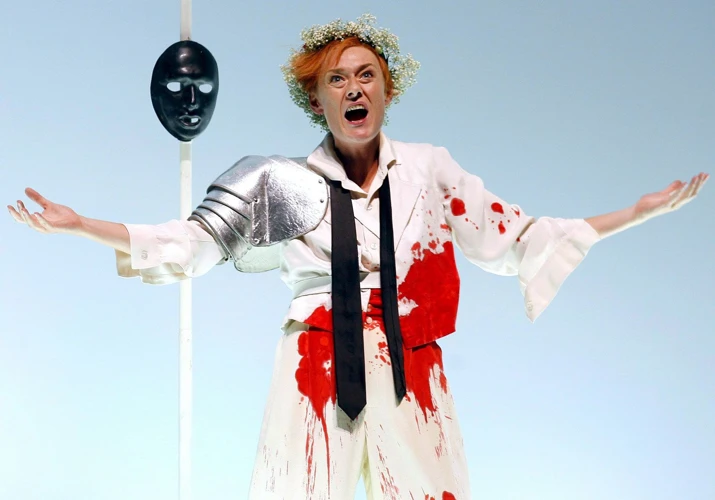
As the pulsating beats of the traditional Middle Eastern music fill the air, it’s impossible not to be drawn into the rhythm of the dance. The hypnotic melodies of the instruments create an atmosphere of joy and celebration, adding to the cultural significance of Middle Eastern dance. In this section, we’ll take a closer look at the music and instruments that play a crucial role in defining the unique style of this dance form. From traditional Middle Eastern instruments to modern fusion music, let’s explore the diverse range of music that accompanies Middle Eastern dance.
Traditional Middle Eastern Instruments
Middle Eastern music is known for its unique sound and is often recognized by the use of traditional instruments that have been used for centuries. Some of the most popular traditional Middle Eastern instruments include:
- Oud: a stringed instrument that has a pear-shaped body and is played with a pick. It is commonly used in Arabic music and is sometimes known as the “Arabian lute”.
- Darbuka: also known as a doumbek or tabla, is a type of drum. It is a small, handheld percussion instrument that is common in Middle Eastern music.
- Santur: a trapezoidal-shaped stringed instrument that is played by striking the strings with two hammers. It is commonly used in Persian music and has a unique sound that is difficult to replicate with other instruments.
- Ney: a type of flute that is played in a vertical position. It is made of reed and is commonly used in Persian and Arabic music.
- Qanun: a stringed instrument that is similar to a zither. It is commonly used in Arabic music and is played by plucking the strings with the fingers or a plectrum.
- Riq: a type of tambourine that is played with one hand. It has jingles or small cymbals attached to the frame, which creates a unique sound that is commonly heard in Middle Eastern music.
- Tar: a long-necked, fretted lute that is commonly used in Persian music. It is played with a pick and is known for its ability to create complex rhythms and melodies.
- Saz: a stringed instrument that is commonly used in Turkish, Azerbaijani and Kurdish music. It has a long neck and a pear-shaped body and is played with a plectrum or a bow.
- Buzuq: a long-necked fretted instrument that is commonly used in Arabic music. It is played with a pick and is known for its ability to create a wide range of sounds.
These traditional instruments are an important part of Middle Eastern music and are often used in combination with each other to create unique, complex sounds that are highly regarded around the world. Their distinctive sound is instantly recognizable and has influenced musicians from all over the globe.
Modern Fusion Music
Modern fusion music is a relatively new form of Middle Eastern dance music that blends traditional Middle Eastern instrumentation with contemporary Western beats and electronic sounds. This genre has gained popularity in recent years, especially among the younger generation, and has introduced a fresh, modern sound to traditional Middle Eastern dance.
1. Incorporation of Traditional Instruments: Modern fusion music often incorporates traditional Middle Eastern instruments, such as the oud, darbuka, and qanun. These instruments are used to create a unique fusion of Middle Eastern and Western styles of music.
2. Electronic Beats: In addition to traditional instruments, modern fusion music incorporates electronic beats and sound effects to create a contemporary sound that appeals to younger audiences. These beats and effects are often used to create a new interpretation of classic Middle Eastern rhythms.
3. Collaboration with Western Artists: Modern fusion music has also led to collaborations between Middle Eastern and Western artists. Western musicians, such as electronic dance music (EDM) producers, have worked with Middle Eastern musicians to create new, unique sounds that blend both cultures.
4. Wide Range of Styles: Modern fusion music encompasses a wide range of styles, from upbeat and high-energy to more relaxed and meditative. This variety allows the music to be used in a variety of Middle Eastern dance styles, such as belly dancing and tribal fusion.
5. Popularity in the West: Modern fusion music has gained popularity not only in the Middle East but also in the West. It is often played in nightclubs and used in dance classes and performances, introducing a new generation of Westerners to the beauty and complexity of Middle Eastern dance and music.
Modern fusion music has brought a fresh take on traditional Middle Eastern music, making it more accessible to a wider audience while still preserving its cultural roots. The incorporation of electronic beats and collaborations with Western artists have allowed Middle Eastern music to evolve and stay relevant in a constantly changing world.
The Importance of Middle Eastern Dance in Preserving Culture
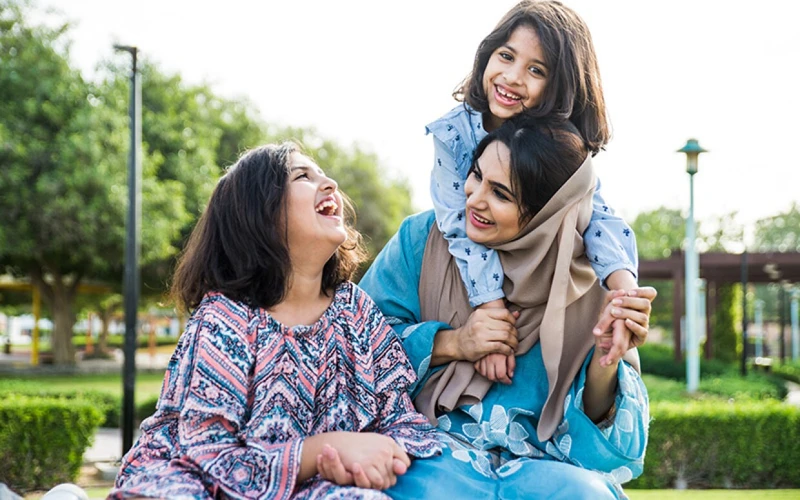
Throughout history, dance has played a significant role in preserving culture and tradition. And middle eastern dance is no exception. The importance of middle eastern dance in preserving culture cannot be overstated. It is a non-verbal way of passing down cultural heritage, values, and beliefs from one generation to the next.
One of the ways this is achieved is through the storytelling aspect of many Middle Eastern dances. Whether it is through belly dance or folkloric dance, there is often a narrative being told through the movements. These stories may be about love, war, nature, or significant events in history, but they all serve to further connect the dancers and viewers to their cultural past.
In addition to storytelling, Middle Eastern dance also preserves traditional movements and styles that have been passed down over generations. These movements are distinct to different regions of the Middle East, and many are specific to particular tribes or families. By preserving these movements and styles, future generations can connect with their ancestors and maintain a connection to their cultural heritage.
The importance of Middle Eastern dance in preserving culture is not limited to the Middle East itself. As the dance form has spread and grown in popularity throughout the world, it has connected people from diverse cultural backgrounds to the Middle East. In this way, it can serve as a tool for fostering global cultural awareness and understanding.
The importance of Middle Eastern dance in preserving culture lies in its ability to maintain tradition, pass on stories and values, and connect people to their cultural heritage. As long as the dance form continues to be practiced and respected, it will continue to play a vital role in preserving the rich and diverse culture of the Middle East.
The Controversy Surrounding Middle Eastern Dance
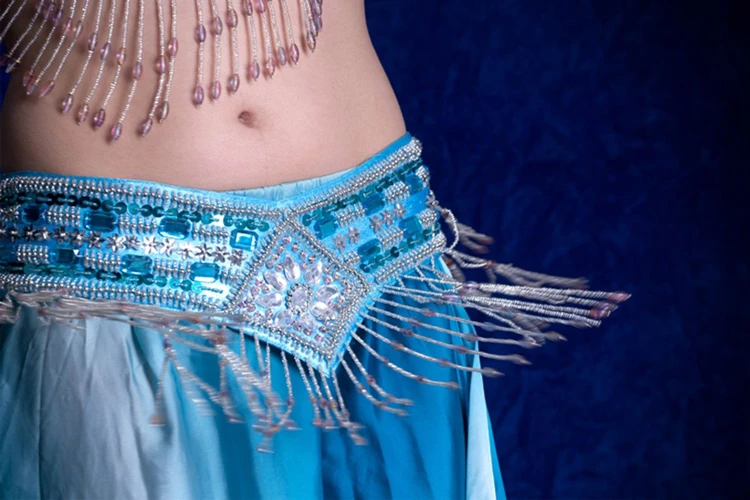
Middle Eastern dance, also known as belly dance, has been controversial in some parts of the world due to its sexualized portrayal in popular culture. While the dance form has a rich cultural history, it has been misunderstood and misrepresented in the western world. Some argue that Middle Eastern dance is a form of cultural appropriation, where dancers from outside the Middle East take elements of the dance and perform them without regard for its cultural significance.
Critics claim that belly dance is solely a form of entertainment for men, and the costume and movements are sexually suggestive. However, this is a narrow and incorrect interpretation of the dance form. In Middle Eastern culture, belly dance is an important part of celebrations and festivals, and is performed by both men and women.
The perceived sexualization of Middle Eastern dance is often due to the Western gaze, which tends to objectify women’s bodies. In fact, the traditional Middle Eastern costumes worn during belly dance performances are often modest, with loose, flowing fabric covering the body.
Despite the controversy surrounding belly dance, many dancers and scholars argue that it is an important part of cultural heritage that should be respected and celebrated. In recent years, there has been a movement towards reclaiming Middle Eastern dance and teaching it in a culturally sensitive and authentic way.
It is important to recognize that Middle Eastern dance is not solely a form of entertainment, but a cultural practice that has been passed down for generations. Just as with any cultural practice, it is important to approach it with respect and cultural sensitivity. The controversy surrounding Middle Eastern dance highlights the need to promote cultural understanding and to combat cultural appropriation.
The Growth of Middle Eastern Dance in the West
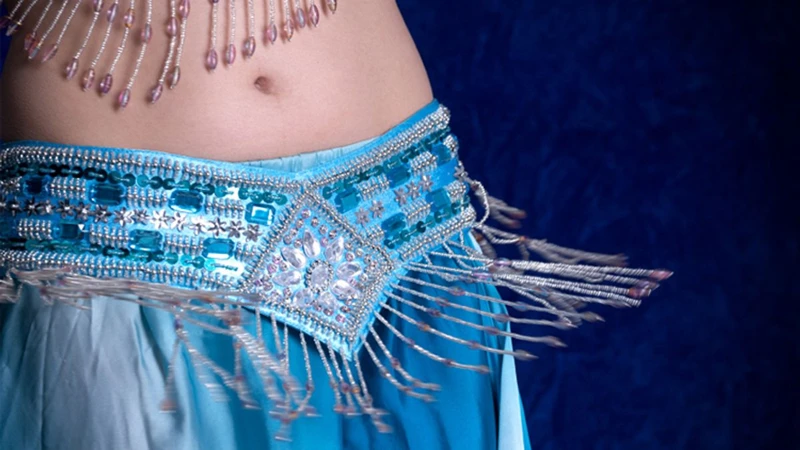
In recent years, there has been a significant growth in the popularity of Middle Eastern dance in the West. The dance has been embraced by people of all ages and backgrounds, and is now widely featured in dance studios, community centers, festivals, and other cultural events across the United States and Europe. This newfound popularity can be attributed to a variety of factors.
One reason for the growth of Middle Eastern dance in the West is the globalization of culture. With increased access to cultural experiences and influences from around the world, Western audiences have become more open to diverse forms of artistic expression, including Middle Eastern dance. This has led to a greater appreciation for the beauty and complexity of this dance form, as well as a desire to learn more about its cultural origins.
Another contributing factor to the growth of Middle Eastern dance in the West is the rise of social media and online platforms. With the internet, dancers and enthusiasts from all over the world can connect and share their experiences, ideas, and performances. This has created a global community of Middle Eastern dance lovers who can learn from each other and support each other’s growth.
Additionally, many dance schools and studios have recognized the growing demand for Middle Eastern dance instruction and have started to offer classes and workshops. This has made the dance more accessible to a wider range of people, and has also helped to promote it as a legitimate art form in the West.
Despite the growing popularity of Middle Eastern dance, it still faces some challenges and controversy in the West. Some people view it as overly sexualized or inappropriate, while others criticize it for appropriating cultural traditions. However, many dancers and enthusiasts are working to challenge these stereotypes and promote a deeper understanding and appreciation for the art form.
The growth of Middle Eastern dance in the West is a positive development that has helped to promote cross-cultural understanding and appreciation. As this dance form continues to gain popularity and recognition, it has the potential to bring people together, celebrate diversity, and bridge cultural divides.
The Future of Middle Eastern Dance
As the world becomes more interconnected, the future of Middle Eastern dance seems bright. With the growth of the internet and social media, the art form has become more accessible to a global audience. However, it is important that as Middle Eastern dance gains popularity, cultural misappropriation is avoided and the integrity of the art form is respected.
One potential issue that may arise in the future is the commodification of Middle Eastern dance. As demand for the dance form grows, commercialization may lead to the production of generic and inauthentic performances, devoid of cultural context and meaning. This could cause the loss of the dance’s historical and cultural significance, reducing it to a mere form of entertainment. It is important that practitioners and fans of Middle Eastern dance continue to educate themselves and others about the history and cultural significance of the art form.
Another potential issue is the ongoing controversy surrounding Middle Eastern dance. Some view it as a form of objectification of women, while others view it as a celebration of femininity and empowerment. It is vital that the dance form is viewed and promoted in a respectful and accurate way, ensuring that it is not used to perpetuate negative stereotypes or promote cultural appropriation.
Despite these challenges, the future of Middle Eastern dance is promising. As the world becomes more diverse and multicultural, it is likely that the dance will continue to evolve and adapt, incorporating new techniques and styles while preserving its rich history and cultural significance. With its intricate movements, beautiful costumes, and vibrant music, Middle Eastern dance will continue to captivate audiences around the world and inspire future generations of dancers.
Conclusion
In conclusion, Middle Eastern dance plays a significant role in the cultural and social fabric of the region’s celebrations and festivals. It has a rich history that spans centuries and has evolved over time to reflect the changing times and cultural influences. This dance form is a source of pride and identity for many communities in the Middle East and has helped shape their cultural expressions.
Middle Eastern dance is not just a means of entertainment; it is an art form that has deep spiritual and symbolic references. It serves as a means of connecting people to their traditions, values and beliefs, and creating a sense of community and belonging. This dance form is a way of expressing emotions and celebrating life’s important moments.
Despite the controversy surrounding Middle Eastern dance, it continues to gain popularity and evolve in the West. Many non-Middle Eastern dancers are drawn to this dance form for its expressive movements, intricate choreography, and captivating music.
It is important to recognize the cultural significance of Middle Eastern dance and ensure that it is disseminated and appreciated with respect and understanding. As the world continues to become more interconnected, the role of Middle Eastern dance in shaping culture and preserving traditions will only continue to grow.
In the end, Middle Eastern dance can serve as a bridge between cultures and a celebration of diversity. It is an art form that has the power to bring people together and promote an appreciation of the rich cultural heritage of the Middle East. As such, it is important to nurture and support Middle Eastern dance in all its forms, ensuring that it continues to be a vital part of cultural expression and celebration.
Preguntas frecuentes
What is the origin of Middle Eastern dance?
Middle Eastern dance has its roots in ancient fertility rituals and religious ceremonies practiced throughout the Middle East over thousands of years.
Are all Middle Eastern dances the same?
No, there are many different styles of Middle Eastern dance, each with its own unique movements, music, and cultural significance.
What is the significance of Middle Eastern dance in religious celebrations?
In many Middle Eastern religions, dance is considered a form of worship and is used to celebrate important religious holidays and events.
What role does Middle Eastern dance play in traditional wedding ceremonies?
Middle Eastern dance is often performed at weddings as a way to express joy and celebrate the joining of two families.
What other festivals and celebrations feature Middle Eastern dance?
Middle Eastern dance can be found at a wide variety of cultural events, including music festivals, cultural fairs, and food festivals.
What is belly dancing?
Belly dancing is a style of Middle Eastern dance characterized by fluid and graceful movements of the torso and hips.
What is Middle Eastern folkloric dance?
Middle Eastern folkloric dance encompasses a wide range of traditional dances from various Middle Eastern countries and cultures.
What is tribal fusion?
Tribal fusion is a modern form of Middle Eastern dance that blends traditional Middle Eastern movements with elements of contemporary dance.
What types of costumes and props are used in Middle Eastern dance?
Middle Eastern dance costumes typically include long flowing skirts, veils, and ornate jewelry, while props such as swords, canes, and tambourines are often used to complement the dance.
What is the controversy surrounding Middle Eastern dance?
Some conservative religious and cultural groups view Middle Eastern dance as inappropriate or indecent, particularly when performed by women.

